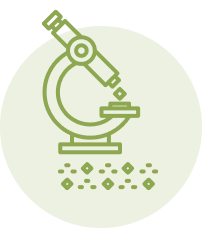There are multiple causes for leaf yellowing (chlorosis) in plants. Evaluation of whether older or newer leaves are yellowing, whether the entire leaves yellow, or if the leaf veins remain green while the rest of the leaf turns yellow (interveinal chlorosis) are important clues to identify the cause of the problem.
Yellowing where the leaf veins remain green that appears first in young leaves and gradually moves to older leaves is commonly caused by iron deficiency. Yellowing from iron deficiency is sometimes called iron chlorosis.
Just as iron is important in human nutrition, it is important for plant health. It is one of the essential micronutrients in plant nutrition. Iron is needed for the manufacture of chlorophyll, which allows plants to capture energy in sunlight to manufacture sugars (photosynthesis). It is also involved in many other cellular functions in plants.
Correcting Iron Chlorosis
Leaf yellowing can indicate iron deficiency. However, sometimes it is the soil pH that is causing the problem. Soils with high pH (alkaline soils) make iron unavailable to plants. In such cases, iron may be present in the soil, but in forms that plants cannot take up. Lowering the pH is the way to remedy iron chlorosis in alkaline soils. Earth Science Fast Acting Sulfur® can be used to correct high pH soils.
If soil pH is not overly alkaline, applying iron can remedy leaf yellowing from iron deficiency. Earth Science Fast Acting Iron® can be applied to quickly reverse yellowing and return plants to a lush, green color. This non-burning, non-staining formula is pelletized so it is easy to apply and virtually dust free.



